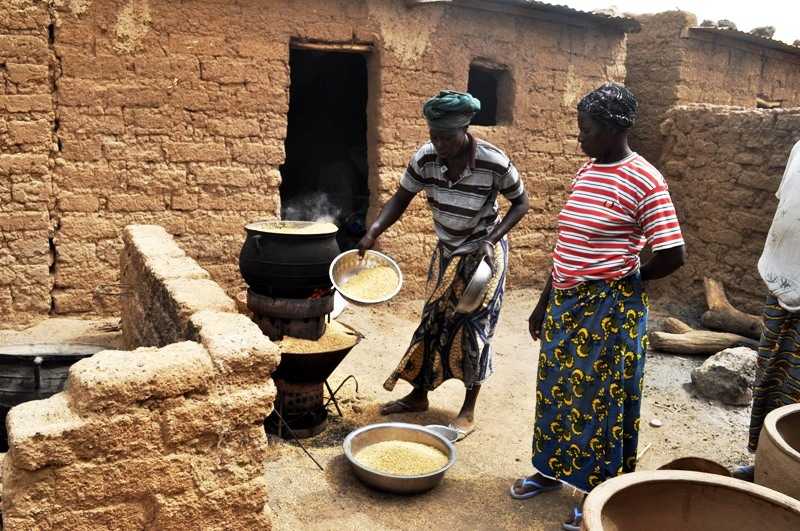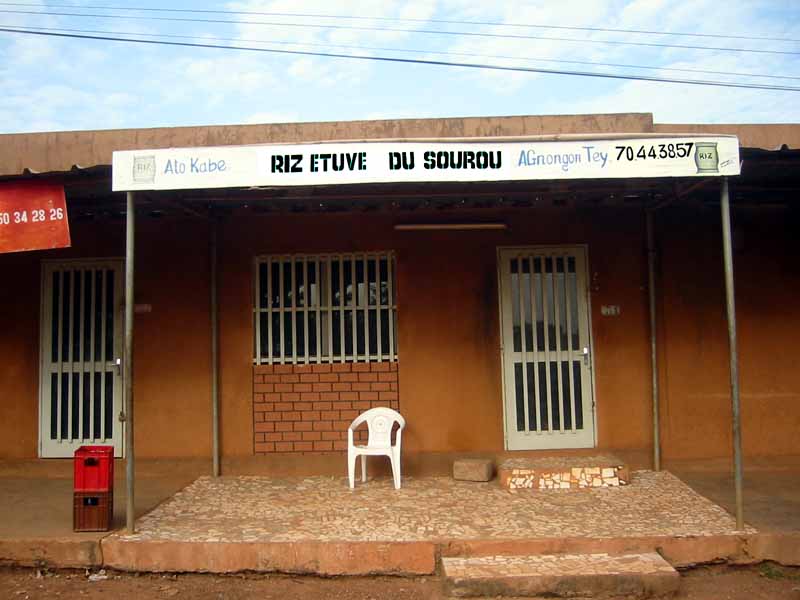Which restaurants will be the first to offer customers parboiled rice and sesame sauce Made in Burkina?
I come to the end of the last issue of « ”Grain de sel” (n° 58, avril-juin 2012) on the ”Valuation of local products: a variety of solutions to face the challenge”. This issue of ”Grain de sel” is definitely of great interest and easy to read. The editorial ”Support for initiatives of family farms and small businesses to conquer urban markets” describes the problem very well. There are several reports on successful initiatives to that effect. The first brick of a vast edifice has been laid, notes Inter-réseaux, encouraging us to continue the exchange

But in actual fact the new recipes are still too few and not as widely present as one would wish. I still remember being approached some years ago by a French association ”Orange bleue” for imports to France of fonio. They started out by buying a small quantity, offering it to a hotel school in the Toulouse area in France.The school rapidly produced 30 recipes based on fonio. What a contrast compared to Burkina. I am happy to learn that in Burkina, at present, the network of women working with cereal ingredients (Réseau des transformatrices de céréales RCTF) now propose fonio pancakes. However, when I go to a restaurant and ask for a fonio dish, I am often told that there is none, or when there is, the “choice” is fonio cous-cous – that or nothing. It is good! But I would like to taste some other fonio recipes.
With the growing urbanisation of West Africa ,it is obvious that the city population is an increasingly important market for local products. Therefore it is vital to understand what urban consumers choose, both in order to meet the demand and to make it evolve. I arrived in Burkina Faso in 1965 (then Upper Volta). For years I believed that the usual grey was the natural colour of tô (this national dish was previously made exclusively from millet or sorghum). But as I later came to Boni, near Houndé, the tô became yellow – farmers had abandoned these former crops and turned to maize.
But today, in Koudougou and in particular in Ouagadougou, the tô has turned white. It is still made from maize, but the corn has been milled and stripped of its bran, which is kept for animal feed, mainly for pigs! To the pigs the best, to us humans the rest it seems! But the fact remains that women in Ouaga take particular pride in offering you a resplendent.
The same thing goes for rice! Impossible (?) to find « rice-and-sauce »( the rice and the sauce being cooked and served separately) made with parboiled rice. The parboiled rice is healthier, but has the misfortune of not being sufficiently white. Most city dwellers will tell you that parboiled rice is all right for making ”riz gras” (rice-in-sauce, the rice being cooked in the sauce and therefore obviously never white), but for rice–and-sauce, you must use white rice, husked and milled without a trace of bran (which once again is put aside for animal feed - bad luck for us humans !) Therefore you will be treated to a rice of admirable whiteness, the sauce coming in aside.
In Koudougou for many years now I have, with a few rare exceptions, always had parboiled rice from the Sourou plains (the T2 variety). I like it very much, both as: « rice-in-sauce and rice-and-sauce ». But I have so far never been able to find parboiled rice with a sesame sauce, sometimes served with tô in the Kiembara region in the 70ies, at the time when the farmers of Upper Volta paid their taxes ”per capita” and those in Kiembara grew sesame to get money to pay the tax.
 I would like to contribute to the promotion of parboiled rice by asking catering managers, men and women, not to hesitate to use the parboiled variety for rice-and-sauce and I would also like to see them offer sesame sauce in that context.
I would like to contribute to the promotion of parboiled rice by asking catering managers, men and women, not to hesitate to use the parboiled variety for rice-and-sauce and I would also like to see them offer sesame sauce in that context.
Therefore I launch an appeal to all managers of restaurants in Koudougou and Ouagadougou: : I offer a 25kg bag of Grains d’Or rice from Sourou (parboiled rice sold by Le Relais in Koudougou; this rice is ”doux et sans cailloux” (tender and slender – no stones included) to the first three restaurant owners who invite me to taste a good dish of rice with sesame sauce, made with parboiled burkinabè rice ( it being understood that the offered 25 kgs of Grains d’Or are to be used exclusively for rice-and-sauce) the choice of sauce being optional, either sesame or any other kind which is popular among customers.
K Koudougou September 22nd, 2012
Maurice Oudet
Director, SEDELAN
N.B: In Ouagadougou you will find , the Grains d’Or rice in the shop at Pissy, near the motorway to Bobo Dioulasso (on the right hand side coming from the center of Ouagadougou, opposite the Shell gas station in Pissy). Click on the picture above, you will find the telephone number to the shop.











